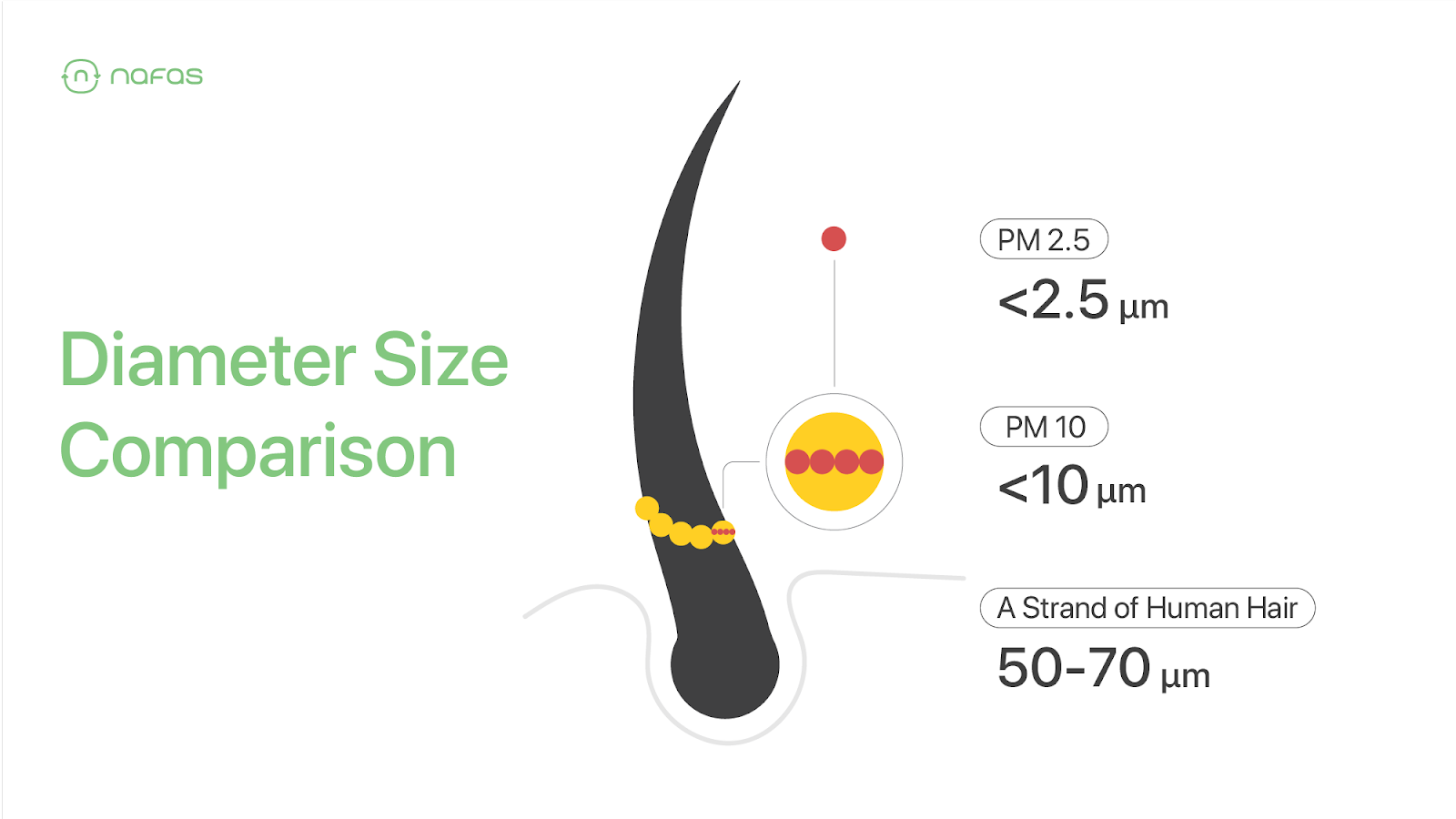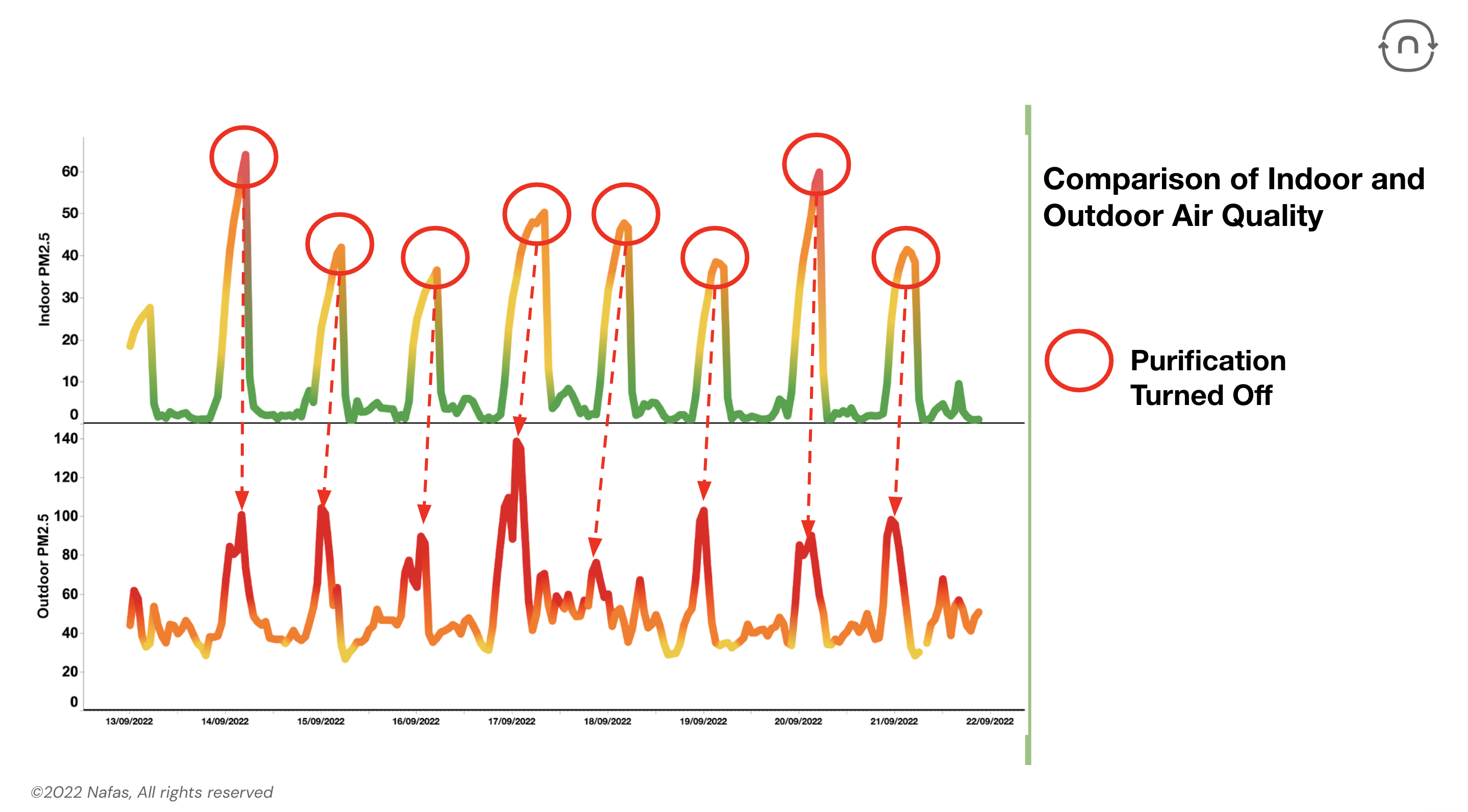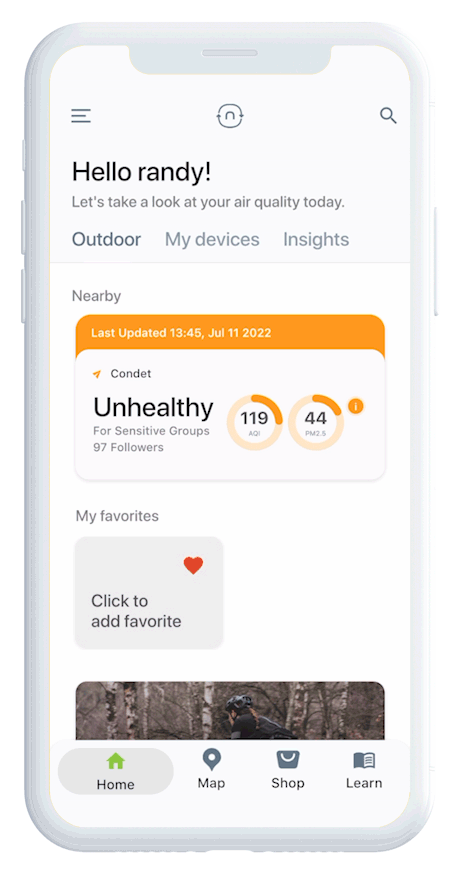Does PM2.5 pollution affect productivity in the workplace?
Recent research suggests that there’s a surprising input into productivity that no one ever thinks about: clean air. Air quality matters for workers’ productivity and cognitive ability.
📖 This article will tell you some sort of new facts and information about:
- PM2.5 affects worker productivity in various workplaces, particularly indoors.
- Exposure to PM2.5 leads to blood pressure which affects cognitive effects and mood changes, so it can affect productivity.
- One study states the better the air quality, the higher a person's productivity level. One study showed lower cognitive test results in office workers with PM2.5 exposure above 12 μg/m3.
We all know that air pollution is bad for our health. Recently, research has gone a step further by beginning to catalog how PM2.5 (air pollution particles that we face every day) may affect our productivity. These tiny particles are thought to have an impact on worker productivity.
What is PM2.5?
PM2.5 refers to microscopic particles in the air. They can penetrate deep into your respiratory tract, affecting your health. PM2.5 is especially dangerous due to its tiny size — roughly 30x smaller than the width of human hair. PM2.5 has also been linked with cognitive effects, such as reductions in test scores. If the negative impact on productivity is due to impaired cognitive function, it could imply that the negative impact of pollution on productivity is greatest in higher-skilled jobs. Air pollution also has an impact on mood, which may reduce productivity.

PM2.5 can easily enter buildings, with penetration ranging from 70 to 100 percent
PM2.5 pollution, which is mostly generated from outdoor activities, certainly affects indoor air quality. PM2.5 levels indoors result from a combination of indoor and outdoor sources. PM2.5 is easily absorbed by buildings, with penetration rates ranging from 70% to 100%. This makes avoiding PM2.5 difficult. Unlike other pollutants, which either remain outside or rapidly degrade once inside, PM2.5 that has entered the room will still accumulate and worsen the indoor air quality. This is certainly causing concern, especially in buildings without good air circulation. Indoor air quality is thus easily influenced by outside conditions.
🧐 Now, let's see how much indoor PM2.5 affects worker productivity in a variety of workplaces!
Higher indoor PM2.5 levels hurt factory work
Research published in American Economic Journal investigated the effects of indoor PM2.5 on the rate at which workers packed pears in factories.
📊 They discovered that higher PM2.5 levels hurt packing speed. These effects appear when PM2.5 exceeds 15 µg/m3 and then increases. An increase in PM2.5 pollution of 10 µg/m3 reduces worker productivity by $0.41 per hour or about 6% of average hourly earnings.
This study discovers that labor supply is unaffected by PM2.5, implying that their estimates are not tainted by sample selection bias. Furthermore, they discover that certain outdoor conditions, such as solar radiation and ozone, do not affect the indoor work environment or worker productivity.
Effects of air pollution on call-center workers inside an office
📞 According to a study on call-center workers, workers are 5%–6% more productive when air pollution levels are rated as good by the Environmental Protection Agency (AQI of 0–50).
On high-pollution days, workers reduced the number of calls they placed or received, which was largely driven by an increase in the number of breaks taken throughout the day. On average, there is a 0.35% decrease in the number of calls handled by workers when there is a 10-unit increase in AQI.
PM2.5 affects reduced performance outcomes in office workers
An observational study by researchers from Harvard T.H. Chan School of Public Health, Harvard Graduate School of Arts and Sciences, Academia Sinica in Taiwan, and Beihang University in China found that higher indoor PM2.5 levels were significantly associated with decreased performance in the cognitive test output. This research was done as part of the Global CogFx study, which was conducted between May 2018 and March 2020 among office workers from a convenience sample of urban commercial buildings in six countries (China, India, Mexico, Thailand, the United States of America, and the United Kingdom).
🧠 Their study claimed that increased PM2.5 concentrations were significantly associated with lower performance on 4 out of 5 cognitive test outcomes in office workers, with PM2.5 levels equal to or above 12 μg/m3.
Five cognitive performance metrics of office workers were significantly associated with real-time indoor concentrations of PM2.5.
Think about the situation in Indonesia
As we previously mentioned, PM2.5 levels indoors result from a combination of indoor and outdoor sources. Due to its super small size, PM2.5 can easily penetrate buildings through gaps or cracks in building walls, windows, and doors.
Referring to one of the studies we discussed earlier, the CogFX study, let's take a peek at the outdoor air quality over the last 6 months in South Jakarta!

From the data, it can be seen that PM2.5 concentrations always exceed the WHO limit (5 µg/m3). From January to September, the PM2.5 concentration also always exceeded the PM2.5 concentration limit referenced in the CogFX study, which was 12 µg/m3.
Seeing how unhealthy the outdoor air is, let's see how it affects indoor air quality. Here are the indoor air quality data in a building in South Jakarta measured by Nafas.

We can see the relationship between the two graphs, right? High air pollution outdoors will be the same as high air pollution indoors.
🤔 So, how does it compare when a room is installed with an air purifier?
Here is the PM2.5 data indoor vs outdoor location when the air purifier is off during business and nonbusiness hours.

And here is the PM2.5 data indoor vs outdoor location when the air purifier is on during business and nonbusiness hours.

When the air purifier is turned on, the graph shows an improvement in indoor air quality, with green indicating good air quality, even during bad air day. Installing an air purifier could be one solution to tackle the problem of indoor air pollution, thus increasing the productivity of those who work indoors.
Things that you can do to protect yourself from air pollution
For everyone else, our findings are a reminder that our productivity isn’t completely in our control. Instead, it hinges partly on complicated environmental factors like pollution. Here are some tips on how you can protect yourself from air pollution:
- Always monitor the outdoor air quality with the Nafas app to plan your day before work.
- When working indoors and the air quality is bad, make sure to close your windows and your doors. When it comes to good, you can open your windows to recirculate the air. Installing air purifier may bring great benefits; HEPA air filters can remove much of the pollution that hampers productivity.
- Always use Personal Protective Equipment, such as an N95 mask when your job requires you to be outside.
To stay informed about the air quality in your office location, you can use our “Save Favorite” feature in the Nafas app - just press ❤️ anywhere on the app.

Want to know the other exciting features of the Nafas app? Check it out here.